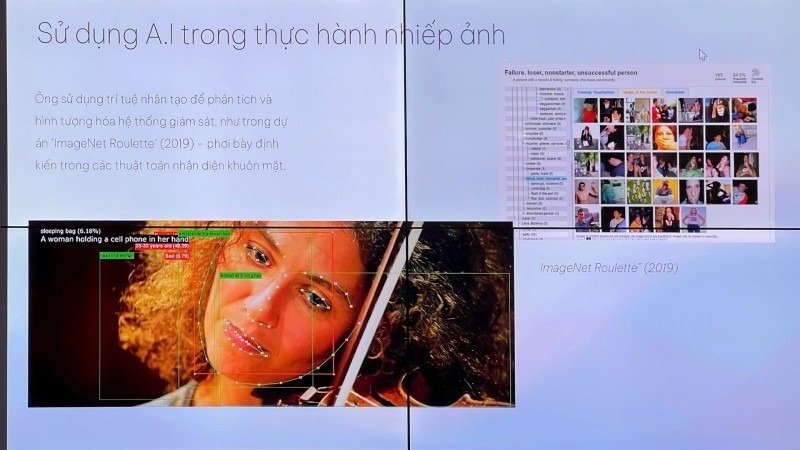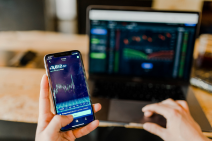Protecting artistic photography amid the AI wave
The rapid advancement of artificial intelligence (AI) is transforming approaches to the creation of artistic photography. As AI-generated images become increasingly popular and difficult to distinguish from real photographs, the issues of copyright transparency and professional ethics are raising new questions for both photographers and audiences.

In recent times, the photography community and art enthusiasts have witnessed ongoing debates surrounding the use of AI in artistic photography. Some entries shortlisted or even awarded in prestigious photography competitions have had to be withdrawn after being found to rely heavily on AI. Notably, a renowned photographer published an AI-generated image without attribution, leading viewers to mistakenly believe it was taken by the artist. Such incidents not only make the public skeptical about the value of truth and falsehood, but also lead to the need to redefine the role, limits and ethics in artistic creation in the technological age.
Unlike journalistic photography, which must ensure accuracy and a specific moment in time, artistic photography allows creators to experiment, break conventions, and integrate various forms of visual expression. However, it is precisely within this flexible space that the use of AI tools demands even greater honesty.
At the seminar titled “Solutions for Increasing the Number of High-Quality Art Photographs” organised by the Viet Nam Association of Photographic Artists in November 2023, several participants raised concerns about the impact of AI on photography.
Photographer Ly Hoang Long (Lam Dong) and critical theory researcher Tran Quoc Dung (Ho Chi Minh City) pointed out the great potential of AI in supporting creativity, while also warning of the risk of AI erasing values in photography and the need to clearly separate it from traditional photography.
In reality, AI has long existed in photography through software used for editing and restoration. According to a survey by American magazine PetaPixel, over 65% of commercial photographers have used at least one AI tool in their editing process. However, the emergence of generative AI tools which can produce near-instant images with perfect composition, refined lighting, and deep expression from just a short text prompt — has made it possible to create visuals without the use of any photographic equipment.
While such images can be created and used for various purposes, many photographers agree that they should not be considered art.
Photographer Le Viet Khanh (Ha Noi) argues that photography is not merely the creation of visual imagery on a surface, but that each photograph carries emotional depth, thought, lived experience, and the presence of specific people and places that the photographer wishes to share.
Photographer Huynh Van Truyen (Da Nang) further emphasised that if images are intended to serve abstract, surrealistic concepts or advertising graphics, AI can be a highly effective tool — but authors must clearly state the involvement of AI when presenting their work.
Beyond the cultural aspect, questions of copyright and the use of AI are also being raised. To generate images, AI “learns” from vast datasets containing millions of photos found online — the majority of which belong to photographers or copyright-holding organisations. This leads to the risk of copyright infringement, as original works are used as input without the owner’s permission.
Global lawsuits and debates surrounding AI-generated works and secondary copyright show the urgent need to revise legal frameworks in light of AI’s growing influence in the arts, including photography. In Viet Nam, the Law on Intellectual Property does not yet contain any specific provisions regarding AI-generated works.
As AI-generated images become widespread and indistinguishable from real photographs, the question of transparency in authorship and professional ethics continues to pose challenges to both creators and the public.
As the legal framework has yet to keep pace with technological developments, some photography organisations and communities in Viet Nam have proactively changed and adapted. At the 2024 Viet Nam Art Photography Exhibition, the organisers announced that works involving AI would not be accepted.
Machines can help humans create faster and with better quality, but they cannot replace the artist’s emotions and heart.
Deputy Minister of Culture, Sports and Tourism Ta Quang Dong
Tran Thi Thu Dong, Chairwoman of the Viet Nam Association of Photographic Artists, frankly admitted that even among jury members and experienced practitioners many still lack a deep understanding of AI, making the evaluation process particularly challenging.
Visual artist and lecturer Nguyen The Son remarked: “Images generated or modified by AI tools are becoming increasingly refined and will inevitably form a part of photography. Some countries have already accepted this and are holding exhibitions exclusively for AI photography.” Incorporating AI into art lectures, he suggested, could help emerging photographers understand, master, and use technology appropriately.
Deputy Minister of Culture, Sports and Tourism Ta Quang Dong has affirmed: “Machines can help humans create faster and with better quality, but they cannot replace the artist’s emotions and heart.”
In photography, beauty lies not only in the image itself but also in the photographer’s journey to seek out and capture the moment. Preserving transparency in artistic photography in the AI era is not an act of conservatism, but a necessary effort to safeguard fundamental values: fairness in creation, audience trust, and the standing of art as a language deeply rooted in humanistic ideals.








